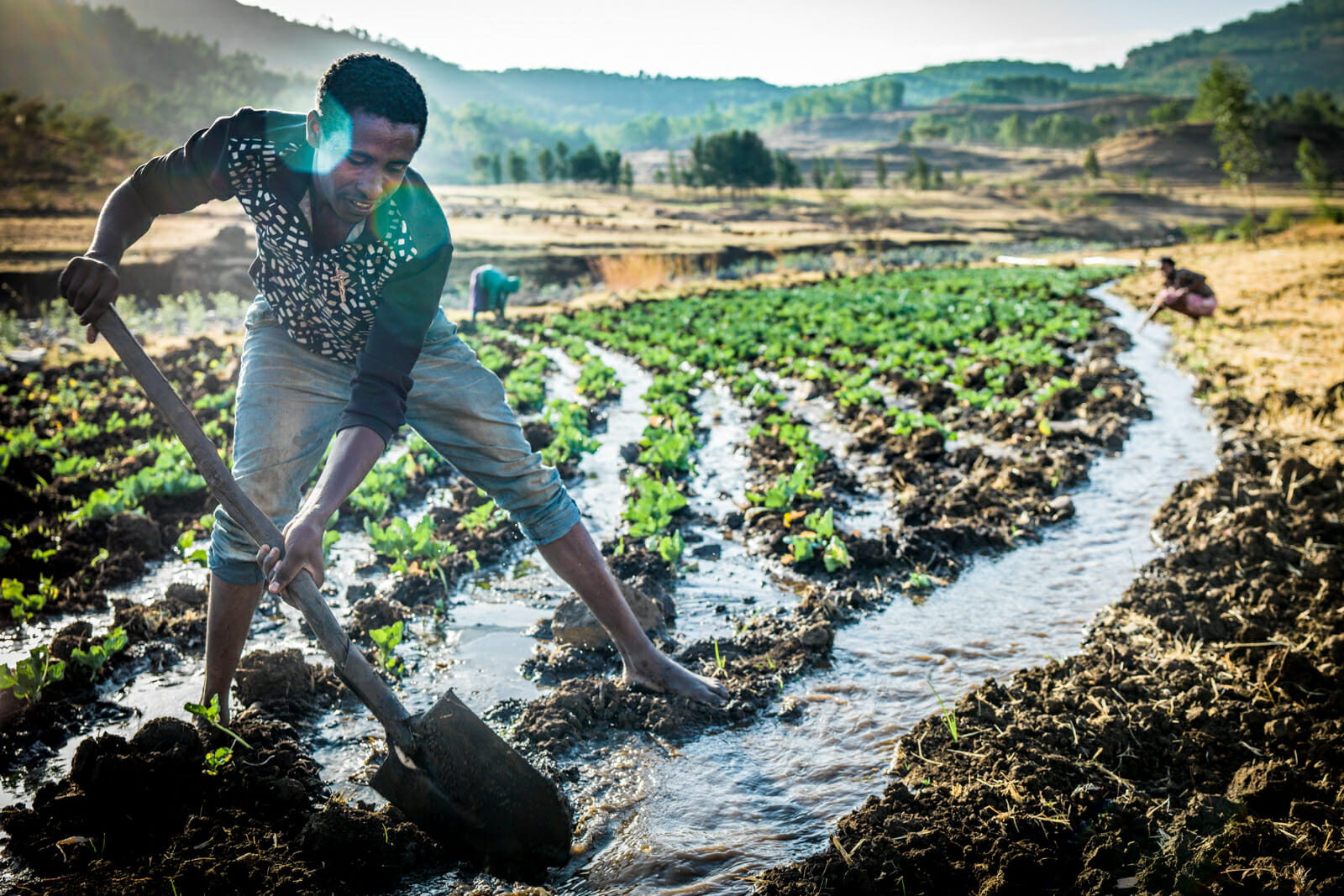
How to Improve Micro Irrigation in Africa
Irrigation has the potential of transforming African agriculture from its current subsistence farming to a commercial enterprise. By increasing resilience to droughts and climate change-induced changes in precipitation, the technology can also mitigate the adverse effects of climate change among vulnerable small-scale farmers. However, despite its immense potential, irrigation in Africa has yet to deliver for small-scale farmers. While there may be many reasons for this, an important but often ignored point is the lack of technical input from irrigation experts when implementing farmer-led micro-irrigation projects in Africa. To be well versed with this problem, one has to understand how African farmers adopt small irrigation technologies for their farms.
Typically, African farmers interested in adopting irrigation will start by visiting an irrigation equipment and supply shop. The shop will assign the farmer a technician, who mostly doubles as a sales agent. Based on the farmer’s concerns, the sales person will propose an appropriate irrigation method and write a quote. Guided by the quote, the farmer will procure the necessary equipment and work with the technician to operationalize irrigation at his/her farm. This approach to adopting irrigation has notable weaknesses, including first, ignoring other elements of a complete irrigation project cycle, such as conceptualization and operation and maintenance. Secondly, by focusing on technicians only, this approach ignores the input of experts such as soil scientists, agronomists, and agricultural engineers, reducing its chances of success. A look at the standard best practice for implementing irrigation projects, as noted from successful cases in Africa, reveals the importance of these often ignored experts.
Following the standard best practice will have farmers going through all the phases of irrigation project implementation, from conceptualization, design, construction, operations, and maintenance. At the conceptualization stage, the farmer, guided by an agronomist, will come up with a sound justification for the irrigation project to make the investment worthwhile. This justification could be mitigating climate change effects such as low and sporadic rainfalls or even the need to increase yields by having multiple planting cycles in a year. At the design stage, working closely with soil scientists and agricultural engineers, the farmer will evaluate if the target parcel of land is fit for irrigation by looking at the soils, terrain, and other contextual factors. If fit, the agricultural engineer will develop an appropriate design that includes optimal crop water requirements and irrigation schedules. At the construction phase, armed with the engineering design and technical specifications, the farmer will procure equipment from irrigation shops and hire a technician to install the irrigation kit at the farm.
In the final operations and maintenance phase, the farmer will rely on the maintenance schedule prepared by the engineer to conduct regular maintenance of the irrigation equipment. Notably, this standard best practice approach is holistic, covers all the elements of an irrigation project cycle, and is more likely to yield better results than the previous approach adopted by many African farmers.
More importantly, this standard best approach considers the input of all experts required in the design and implementation of small irrigation projects. The input of these experts carries multiple benefits that farmers fail to enjoy when they use other approaches to adopting irrigation on their farms. For example, soil scientists determine the technical viability of the soils in a farm for irrigation. Without their input, soil-crop mismatch during irrigation is common. A talk with tomato farmers about losses incurred from blight, which is easily preventable by conducting soil tests, will show you the importance of soil scientists. Similarly, agronomists select the crops to plant and suggest the relevant agronomic practices required for the success of the irrigated crops.
A point that seems to escape most farmers here is that irrigation equipment and installations are merely the infrastructures needed to facilitate agriculture. As such, even the best irrigation kits will need the support of good agricultural practices, guided by an agronomist, to yield the best results. It is not uncommon to see failed irrigation projects with excellent infrastructure such as greenhouses, accompanied by a drip kit. The failure of such projects is primarily due to poor agronomic practices, illustrating the importance of agronomists in irrigation.
Agricultural engineers, on the other hand, design the project. They compute the crop water requirements and use the information to size the irrigation infrastructure, such as water tanks, pipelines, and application rates in drip kits. Without the input of the engineers, the project runs the risk of being over or under-designed. In small irrigation projects, over-design happens when the irrigation infrastructure exceeds the capacity of the farming venture. A common example is when the overhead tanks are too big and their height unnecessarily high, leading to resource wastage.
Under designing, on the other hand, occurs when the irrigation infrastructure is too small for the farming venture, leading to a strain on the equipment. An example here is when pumps of a lower capacity than required are used for irrigation, forcing the farmer to irrigate for longer hours. A final problem of failing to include the input of engineers touches on sustainability. Without a proper maintenance schedule, as suggested by an engineer, irrigation equipment may fail, crippling the project at critical times. An illustration here would be drip irrigation projects in the coastal region of Kenya. Water in the area is salty, and clogging of the drip pipelines is pretty common. Without a good maintenance schedule to unclog the pipes, the efficiency of irrigation projects in the area is likely to remain low.
Last but certainly not least are technicians. These are the ones who construct and operationalize the project under guidance from the engineer. Without a good technician, construction will be shoddy, and the project may fail before it starts. Important to note is that technicians should not work alone in irrigation projects. They should collaborate with all other experts such as agronomists, scientists, and engineers. Unfortunately, that is rarely the case. In most micro-irrigation installations in Africa, technicians are the start and end of irrigation. Farmers contact them in irrigation shops and with them alone, go ahead to install irrigation kits in their farms. Other experts such as engineers, agronomists, and scientists are viewed as expensive and unnecessary, a myth that has been demystified in many discussions. Maybe going forward, it’s time African farmers start appreciating and incorporating the input of other experts in their small irrigation projects.

